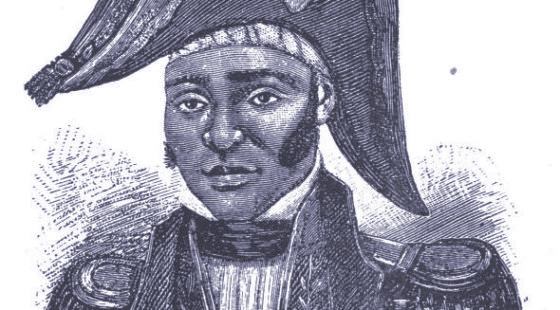Renaming a street is a struggle against white supremacy
 The attempt to change the name of a Brooklyn, N.Y., street sign to honor a hero of the Haitian Revolution, Jean-Jacques Dessalines, involved weeks of discussion in a New York City commission; articles in the Amsterdam News, the Trinidad Express, the Atlanta Black Star, a long article in the New York Times; and a segment on WNYC radio. It also aroused a vicious attack from Sean Hannity’s reactionary Fox News show.
The attempt to change the name of a Brooklyn, N.Y., street sign to honor a hero of the Haitian Revolution, Jean-Jacques Dessalines, involved weeks of discussion in a New York City commission; articles in the Amsterdam News, the Trinidad Express, the Atlanta Black Star, a long article in the New York Times; and a segment on WNYC radio. It also aroused a vicious attack from Sean Hannity’s reactionary Fox News show.
The reason for so much discussion and controversy is that Dessalines was a key leader in Haiti’s “original sin,” namely destroying slavery’s hold over 500,000 people — two-thirds of whom, when the revolution began in 1791, had been born in Africa. That made Haiti the second country in the Western Hemisphere to declare independence from its colonial rulers on Jan. 1, 1804.
That revolution began with a Revolutionary Council in August 1791 and a prayer to “The god who created the earth; who created the sun that gives us light. … The white man’s god asks him to commit crimes. But the god within us wants to do good. Our god, who is so good, so just, He orders us to revenge our wrongs.” (thelouvertureproject.org)
After the 1791 council concluded, Haiti’s enslaved people opened a struggle, attacking over 1,000 sugar plantations all over the north. It was a long and complicated struggle against the French rulers. The monarchies of Spain and Great Britain, competing with France for rule in the Caribbean, also played major roles.
The United States soon after made its first intervention with foreign “aid” when President George Washington ordered Secretary of State Thomas Jefferson to give $750,000 — a major sum at that time — to the French slavemasters to buy weapons.
In 1801 Napoleon Bonaparte, who ruled France following a 1799 coup d’état, ordered an expedition of 20,000 soldiers under the command of his son-in-law Gen. Charles Leclerc to regain control of Haiti. The expedition included a substantial contingent of some 5,000 Polish mercenaries.
Leclerc’s orders were to reestablish the slave system that had produced more than half of all the world’s coffee and 40 percent of the sugar consumed in France and Britain. This coffee and sugar accounted for 40 percent of France’s foreign trade.
A fight for freedom
Once the Haitian masses learned that Napoleon had reinstituted slavery in Guadeloupe and Martinique — two smaller Caribbean islands ruled then and now by French imperialism — their resistance crystallized. The Haitians decided to die on their feet as free people rather than on their knees as slaves.
Even though Leclerc was able to capture, through trickery, the historic leader of the Haitian resistance, Toussaint Louverture, and engage in a viciously brutal campaign against the people, he still couldn’t break the armed resistance. His army was falling apart from a multitude of small-scale but deadly encounters and from disease. Many of the Polish mercenaries deserted, often going over to fight for the Haitians, who welcomed them.
At the beginning of October, as he was dying of yellow fever, Leclerc wrote Napoleon asking for another 25,000 men and explicitly proposing genocide. He wrote: “We must destroy all the blacks in the mountains — men and women — and spare only the children under 12 years of age. We must destroy half of those in the plains and must not leave a single colored person in the colony who has worn an epaulette.” (tinyurl.com/y7lcyq35)
Donatien-Marie-Joseph Rochambeau, who commanded French forces in the U.S. War of Independence, took over in Haiti after Leclerc died in November 1802. He was even more flamboyantly brutal, using flesh-eating dogs he imported from Cuba, but was no more successful than Leclerc. He surrendered Cap Haïtien to Dessalines after the Battle of Vertière and fled to the blockading British fleet in August 1803.
Haiti was in ruins, since all sides had used “scorched earth” tactics, but the slavemasters’ army was gone. About 200,000 people, about half the population, had died in the 13 years of the revolutionary war.
Dessalines proclaimed Haiti’s independence in the town of Gonaïve on Jan. 1, 1804, a month or so after the last French troops left Haiti. Shortly after, he ordered all the white French who had not left Haiti — men, women and children — killed.
This is what Sean Hannity of Fox News called “genocide” and what formed his rationale for opposing co-naming Brooklyn’s Rogers Avenue for Jean-Jacques Dessalines.
Dessalines explicitly said that the Polish soldiers who had fought for Haiti and the brothers and sisters of the Catholic Church who had provided medical care for Haitians should not be killed. In the 1805 Constitution, drawn up under his guidance, these categories of people living in Haiti were explicitly granted citizenship. Article 14 of this Constitution demands that all Haitian citizens should be called “black.”
The justified punishment of the remnants of the French slaveowners was used to inflame pro-slavery public opinion in France and to ward off those calling for the abolition of slavery in the United States.
White supremacists such as Sean Hannity still bring it up to slur Haitians who want to honor their heroes, without putting that punishment in context as a measured reply to France’s genocidal actions in Haiti.
Dunkel is one of the editors of “Haiti: A Slave Revolution 200 Years After 1804,” International Action Center, New York, 2nd edition, 2010, New York, 2004.

